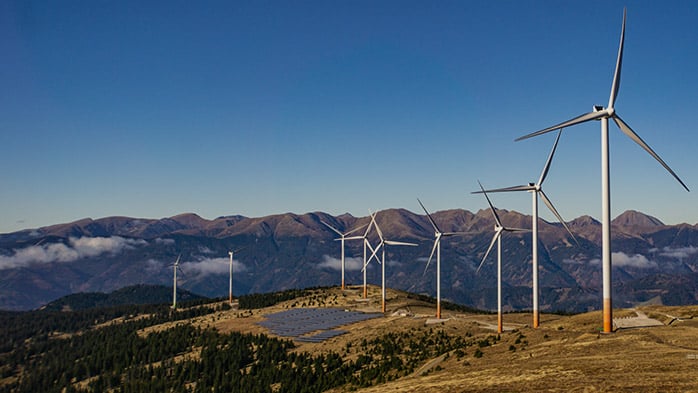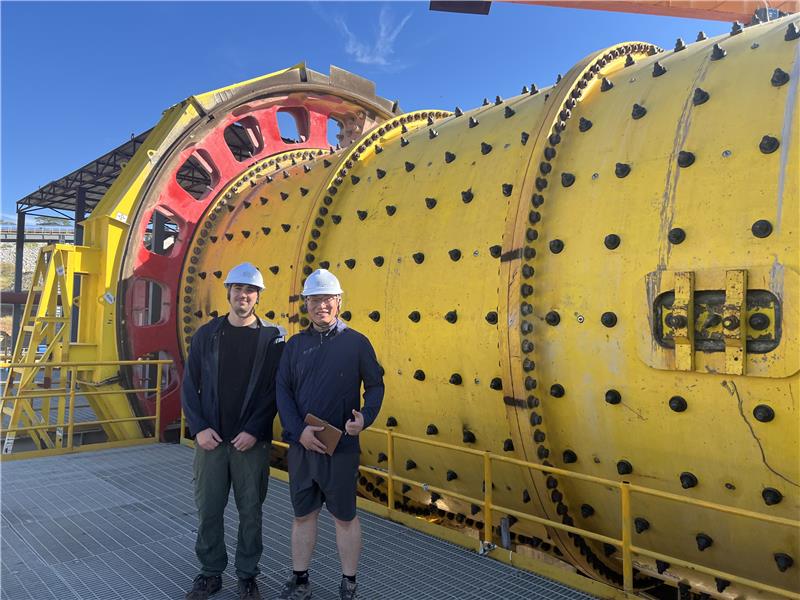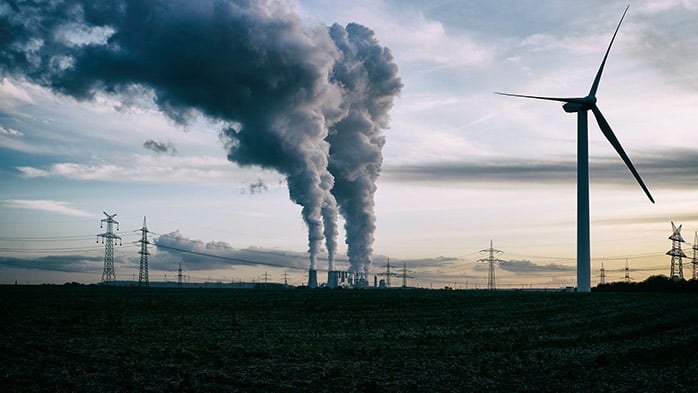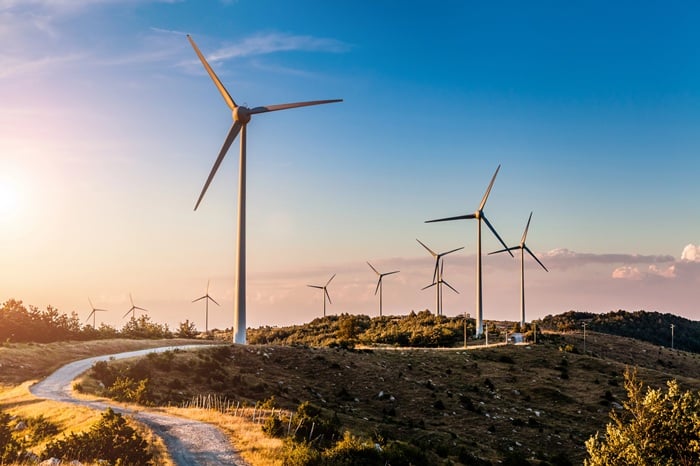This article is produced in collaboration with the World Materials Forum 2021: https://worldmaterialsforum.com/home.html
The increasing momentum behind transportation electrification is driving new supply chains to evolve rapidly.
The increasing momentum behind transportation electrification is driving new supply chains to evolve rapidly. Historically, long and lean automotive supply chains led to cost efficiencies. The challenges of developing entirely new suppliers and embedding sustainability objectives mean:
- Working with many completely new suppliers who are building new regional production facilities
- Building out full value chains so local materials can be processed in the region
- Combatting the Chinese head start in developing their own resilient and local EV supply chains
There are a large number of small steps that can be made by governments, OEMs and materials producers themselves which could come together to enable the development of more resilient and local supply changes outside China in the future.
Supply chains are facing competing pressures, this is keenly felt in the battery metals sector
Why we believe the solution comes from many small steps across the industry
There are a small number of big challenges, which the key players from policy makers to production workers will have to face to make the changes needed.
- New Supply Ecosystems: EV producers need to develop relationships with completely new supply ecosystems.
- ESG: management and reporting of carbon emissions, water usage and the other elements. When we look at the announcements in the press of the last few years and most particularly in the last 12 months we can see a dramatic change in focus of communities, policy makers, investors, producers and consumers in every part of the materials value chain.
- Transparency in relationships: are all parts of managing new and existing relationships with suppliers, financiers and ecologically-minded employees / consumers who may vote with their feet when looking for “green” products. For the companies themselves the return on investment on ESG reporting is not always immediately obvious. Businesses which embark on a route to increased transparency need accurate and validated data for reporting hard to measure variables such as emissions and labour conditions.
- Lumpy investment requirements: Investments to “green” businesses come with high upfront capital costs, and very much delayed returns. The development of Green premia for low emissions materials e.g. Green Aluminium is one way to mitigating this risk.
Can Europe and North America overcome China’s head start?
China retains a dominant position in EV production throughout our forecast period. We cover this in detail in our previous Insight: Could the EV sector’s “Model T moment” come from China? and include there our argument that as Japan and Korea have moved into export markets so could China.
Balance in European EV Supply Chain in 2020 teetering by 2025
In 2020, Europe had precursor manufacturing capacity that approximately matched their cell capacity, as you can see in the % of the world total in the chart. Similarly, an amount of nickel sulphate that matches precursor and cathode active material (PCAM) capacity so the region is moderately self-sufficient although small in scale. However, if we look to 2025, we have forecast a massive increase in cell capacity, with Europe holding a third of the world’s total capacity. Investment plans from Umicore, BASF, and Johnson Matthey support increased production of cathodes in Europe but not to the extent demanded by the scale of cell capacity being installed.
This implies that the cell manufacturers will need to be predominantly supplied by precursor and cathode active materials imported from elsewhere, most likely Asia and therefore despite developing a lot of the end parts of the supply chains within Europe, for the most part it will not be fed by battery metals that are produced within Europe. Even if commodities are mined within Europe they may need, at least for the short term, to go to Asia to be converted into PCAM before they can be used in European cell plants.
This issue becomes less pressing over a 20-year horizon as recycling of EV batteries picks up in the region.
North America not much better off
What this chart shows is an estimate of the total nickel required in EVs sold in North America. They are not necessarily produced in North America and the materials may be imported in EVs, cells or PCAM or Nickel sulphate or other Ni intermediates.
By 2030 these cars will need about 230,000 tonnes of nickel; almost 50,000 tonnes of cobalt and about 200,000 t (LCE) of lithium. These figures are subject to our current estimates of demand and battery chemistry.
If we set this demand against current mine production in the region we can see that nickel production in the whole of North America is about 245,000 t/y but that includes Cuba. Excluding the embargoed material from Cuba we are down to 185,000 t/y. Some of this material is exported in the form of intermediates leaving just 130,000 t/y of finished nickel, and, of that, only 3,000 t is converted into nickel sulphate which is the form required for batteries.
For lithium and cobalt, there is a similar picture. Only about 17,000 t of finished lithium chemicals are produced in region at the moment, vastly lower than potential future demand in the region. Similarly for cobalt, we have about 4-5,000 t/y of cobalt metal although none is converted into cobalt sulphate. While First Cobalt refinery in Canada is considering developing production of approximately 2,000 t/y cobalt sulphate based on DRC-origin feedstock. For lithium and cobalt, is well below where we would expect total demand for cobalt in EVs to be in 10 yea’s time.
It is also important to remember that there are other applications in which these materials are used at the moment, e.g. for nickel: stainless and superalloys which may carry a higher value-add for the supplier than converting to sulphate and supplying the battery sector. This limits the incentive for incumbent producers to change their supply chains to supplying the battery sector. So, in conclusion, all the metals needed for the future battery industry in North America would, as in Europe, need new mine supply for the region to approach self-sufficiency.
Having looked at nickel mining and processing within North America, and knowing there is already EV production most notably by Tesla, the next stage in the supply chain that is lacking is at the precursor stage. At this stage you are adding in manganese sulphate and cobalt sulphate with the nickel sulphate.
The next step is converting the precursor though to Cathode active material through sintering and the addition of lithium. We think there is ample opportunity to ramp up lithium production within North America to meet growing demand over time.
There is only a relatively small amount of cell manufacturing in North America at the moment including the Tesla Gigafactory and several smaller plants. But there are substantial plans particularly by SK Innovation, who are ramping up a plant at the moment in Georgia and with another expansion due in the next few years. They have also recently announced a JV with Ford to further increase cell manufacturing capacity. At the moment, not enough Precursor and CAM capacity is being developed in the region for all those cells and would leave the locus of battery metal demand in Asia if these materials remain being imported.
The other take away is that for developing new nickel and other battery metal operations in the region, for both financing and economic reasons, developers want to be able to show they have a route through to EVs in their home market, but without the intermediate steps in the supply chain it is very hard to do that.
Innovation is needed in financing, technology and sustainability
There are a lot of small responses that could be made to support a move to local and resilient supply chains and bolster the middle sections of the supply chains outside China:
- Governments: we can imagine a range of fiscal measures from direct funding of operations, reduction of exploration barriers, favorable taxation regimes, consistency and transparency of mining codes, providing supporting infrastructure and perhaps clusters for investment. Favorable rates for power, fuel and logistics might also be possible as well as free trade zones with selected partners. Examples of some of these interventions can be seen in Canada and Western Australia where there is a lot of focus on promoting downstream development.
- OEMs: could become more involved in supply chains, in some cases, all the way to the mine, and toll processing material to the EV or perhaps more simply providing guaranteed offtake from mine or chemical plants thus facilitating financing for local plants. They could also be directly involved in project financing themselves although this is less common.
- Miners and producers: Producers and projects are innovating technology and changing flow sheets to directly produce materials closer to the final saving processing steps and transportation. Strong ESG performance can therefore draw financing and provide strong foundation for a mine’s social license to operate.
There is a clear need a coordinated and concerted effort from all 3 types of players to bring about the local supply response. Otherwise, it appears likely that cell and EV manufacturing in North America and Europe will be reliant on precursor materials that will be imported from others the regions.
Reliance on Asia in the middle of the supply chain does not contribute to the Resilient and local supply chains, is unlike to meet customer needs and leaves open the door to increased imports of finished EVs from the local, cost effective and resilient supply chains already built in China.

















